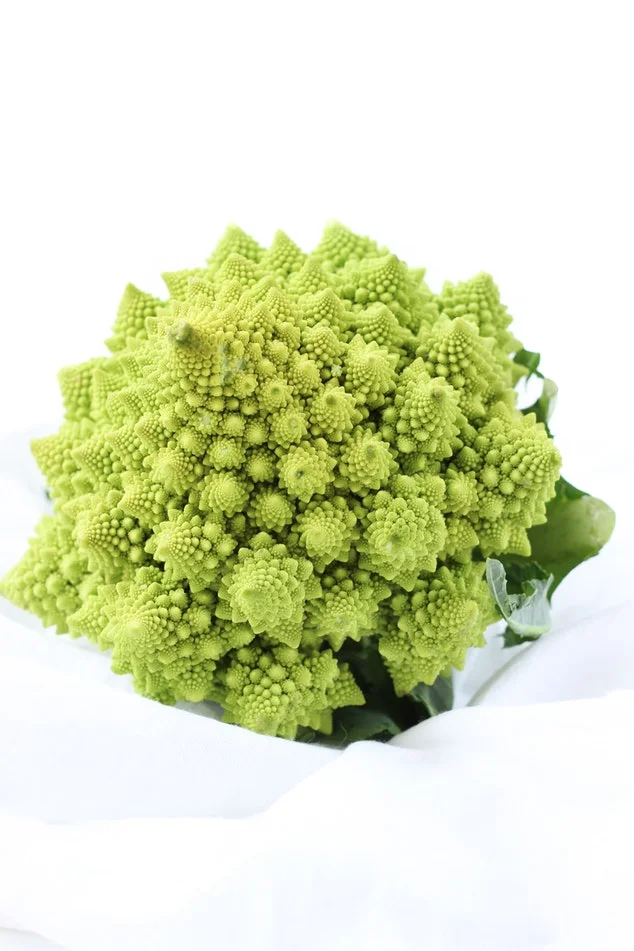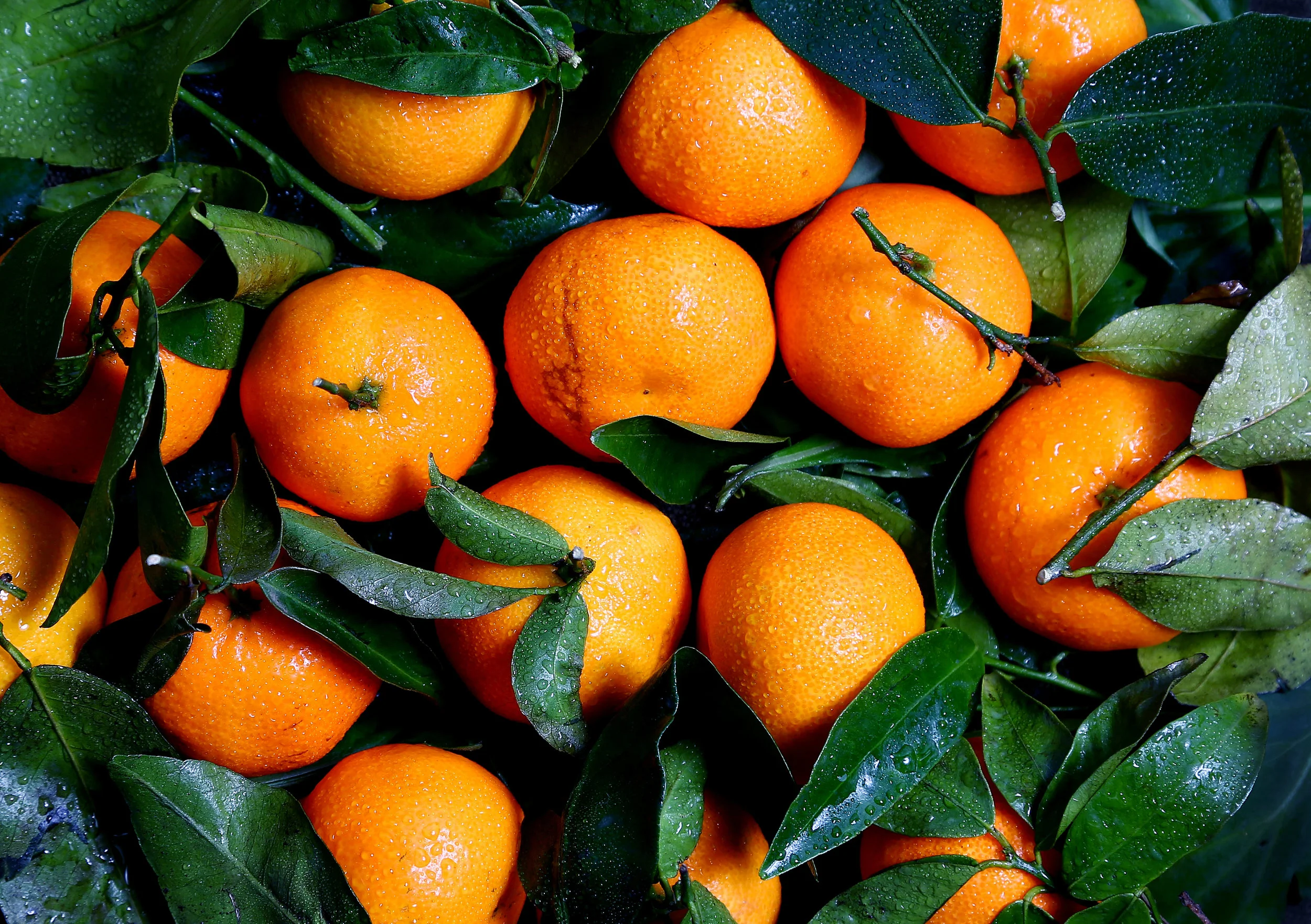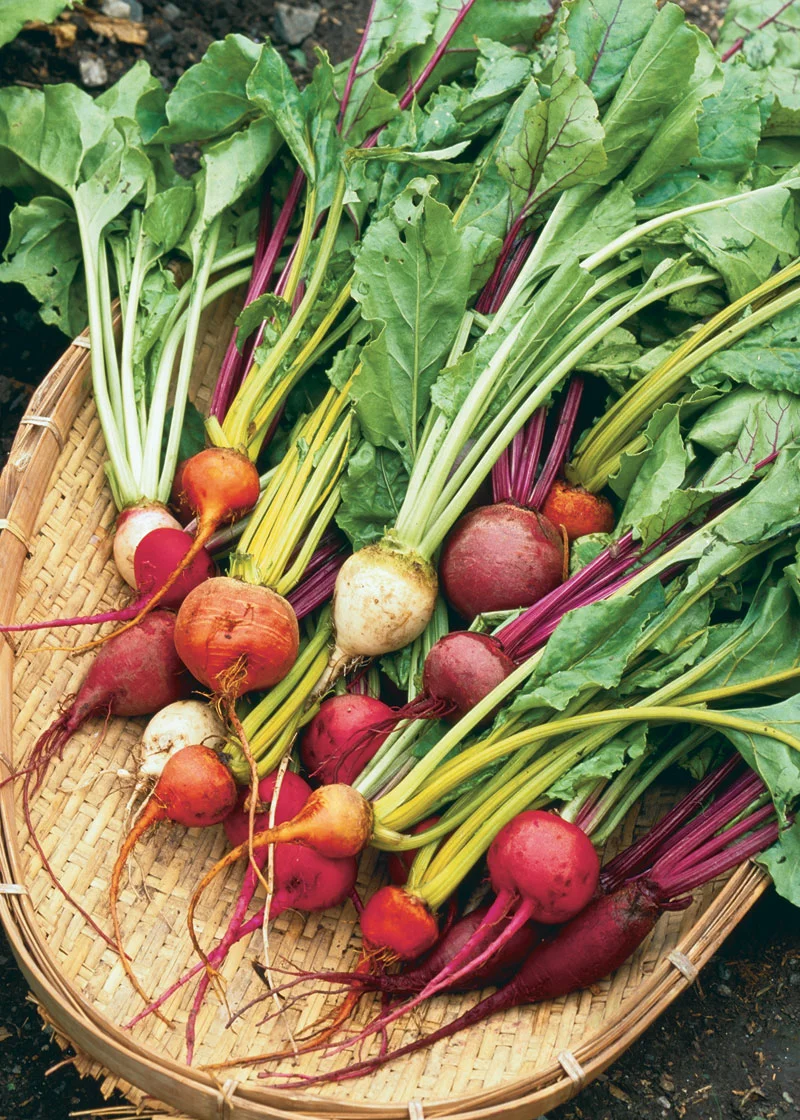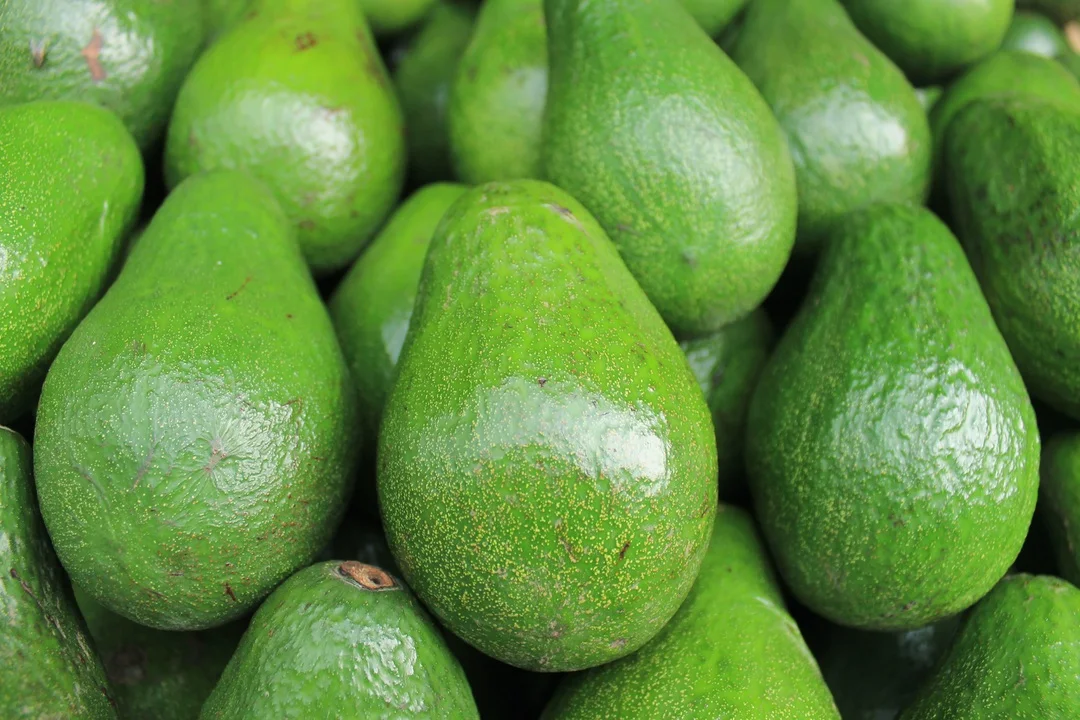Cauliflower is a delicious cruciferous vegetable in abundance this time of year. Enjoy roasted cauliflower, cauliflower fried "rice" and a cauliflower crust pizza.
Viewing entries in
recipe
It’s a new season, which means new produce and new recipes to try! This month’s post features the parsnip, a root vegetable that is related to the carrot. Parsnips look like a white version of carrots and can be enjoyed raw or cooked.
As we get ready to put our winter clothes away, and prepare for spring, its always exciting to learn about the seasons freshest produce. There are many delicious fruits and vegetables that are “spring friendly”, but one that is both tastes and looks good is beets.
Seasonal Recipe: Clementines
Written by Kelli Baker | Reviewed by Adiana Castro MS, RDN, CDN, CLT
During the month of March Clementines can give us a refreshing break from some of the more heavier dishes we were enjoying during the winter months. A citrus fruit somewhere between an orange and a tangerine, Clementines are juicy, sweet, and less acidic than an orange. They are typically easy to peel and divide into 7-14 segments. Clementines are high in vitamin C and folate and are not only are they great to throw in your bag for a quick snack but can also be incorporated into some lovely dishes such as the ones below.
Roasted Chicken With Clementines
Prep Time: 10 Min
Cook Time: 55 Mins.
Total Time: 1 hour
Serves 6-8
INGREDIENTS:
6 ½ tablespoons Arak (or Ouzo or Pernod)
¼ cup olive oil
3 tablespoons freshly squeezed clementine juice
3 tablespoons freshly squeezed lemon juice
2 tablespoons grainy mustard
3 tablespoons light brown sugar or honey
2 teaspoons kosher salt
Freshly ground pepper
8 bone-in chicken pieces (a mix of thighs and drumsticks is nice)
4 clementines, unpeeled, sliced thin
A few sprigs of thyme
2-3 medium onions cut lengthwise then into quarters
2 ½ teaspoons fennel seeds, lightly crushed
INSTRUCTIONS:
1. In a large mixing bowl, whisk together arak, oil, clementine and lemon juices, mustard, brown sugar and salt. Season with pepper to taste.
2. Marinate chicken with mixture, clementine slices, thyme sprigs, onion pieces, and crushed fennel seeds in a large mixing bowl or zip lock back. Turn several times to coat. Marinate chicken for several hours or overnight.
3. Preheat oven to 475 degrees F. After 30 minutes, check on the chicken. If the skin is browning too quickly, turn the oven down to 400 degrees F and continue roasting until the skin is brown and crisp, 20-25 minutes longer.
4. Transfer chicken and Clementines and onion pieces with juices to a serving platter. Let rest 5-10 minutes before serving.
Recipe by: alexandracooks.com
Effortless Clementine, Carrot and Mint Salad
Serves 6
INGREDIENTS:
12 clementines, peeled
2 large carrots, peeled
1 teaspoon red onion, finely chopped
1 tablespoon extra virgin olive oil
½ teaspoon coarse kosher salt
1 handful fresh mint leaves, torn
INSTRUCTIONS:
1. Once the clementines are peeled slice them horizontally, like the equator. You should be able to get about 5-6 slices from each clementine. Arrange them on a large platter, overlapping slightly.
2. Using a vegetable peeler, shave the carrots directly on top of the clementine slices. They will create loose curly cues on top.
3. Sprinkle chopped red onion over the salad.
4. Pick fresh mint leaves off their stems. When you have a good handful, give them a rough tear, arrange on top of the salad anywhere that needs color.
5. Drizzle with a healthy dose of olive oil, and coarse salt.
Recipe by: Food 52.com
Clementine Granita
Prep: 30 mins.
Total Time: 3 Hours 40 mins.
Servings: 4
Yield: Makes 12
INGREDIENTS:
12 clementines, plus 12 more for juicing
½ cup sugar
1 slice (½ inch) peeled fresh ginger
1 tablespoon fresh lemon juice
DIRECTIONS:
1. Slice the top ½ inch off each clementine; reserve. Cut around flesh and scoop out into a sieve set over a bowl; reserve skins and be careful not to tear them. Press flesh to extract juice. Squeeze in juice from tops. (You’ll have about 1 cup.) Juice more clementines to yield 2 cups.
2. Moisten clementine skins with some juice or water. Roll skins in ¼ cup sugar to coat. Freeze until solid, about 2 hours.
3. Bring remaining ¼ cup sugar, ¼ cup water, and ginger to a boil in a saucepan, stirring, until sugar dissolves. Remove from heat. Let stand for 30 minutes; discard ginger. Stir in 2 cups juice and the lemon juice; transfer to a nonreactive 8-inch square-baking dish. Freeze until solid, about 3 hours.
4. Scrape granite with a fork to fluff. Spoon granita into clementine “cups.” Freeze for 10 minutes before serving.
Recipe by: Marthastewart.com
Written by Cheyenne Watts | Reviewed by Jennifer Calo MS, RDN, CDN, CDE, CLT
LET’S RAISE AWARENESS!
In February of 1964, President Lyndon B. Johnson declared the first National Heart Month to raise awareness of cardiovascular health, the leading cause of death for both men and women in the United States. Often people will wear red to honor the holiday, to remember those who have lost their lives to heart disease, and resolve to improve its prevention, detection, and treatment. Scientific research proves that diet plays a big role in the prevention and intervention of cardiovascular disease and stroke. One such heart-healthy food is the focus of our recipe article of the month: beets!
WHY EAT BEETS?
Beets contain naturally occurring nitrates, which are converted into nitric oxide in your body. Nitric oxide, in turn, helps to relax and dilate your blood vessels, improving blood flow and lowering blood pressure.
Beets also contain a nutrient called betaine which helps protects cells, proteins, and enzymes from environmental stress. It's also known to help fight inflammation and may prevent cardiovascular disease. According to Dr. Axe, there have been promising studies that suggest betaine boosts muscle mass and strength, aides in improved endurance, and helps to lower fat in the body.
While beets may stain your teeth and skin the color of Barney the Dinosaur, the very phytonutrients that give red beets their deep color contain some anti-cancerous properties. The flavonoid betazyane in beets has proven to inhibit tumor growth, and high iron content increases cellular respiration which allows the body to kill cancer cells.
Along with it’s superpower properties, beets contain many micronutrients necessary in our diet such as fiber, calcium, iron, vitamins A and C, folic acid, manganese, and potassium.
HOW CAN I ENJOY BEETS?
Here’s the thing: we know that some people have not eaten and will not eat a beet. You may think that beets are “yucky”, “weird”, or have an “odd texture”. That’s alright! We are here to provide you with three recipes to assist you in introducing this nutrient-dense and healthful root vegetable into your diet. You won’t even know you’re eating beets! Except your food might be pink… but that’s more festive anyway!
ROASTED BEET HUMMUS by Minimalist Baker
Prep time 10 mins
Total time 10 mins
Super creamy roasted beet hummus featuring a whole roasted beet, lemon, plenty of garlic flavor. Perfect with chips, pita, veggies or as a sandwich spread. (Vegan)
Serves: 6
Ingredients
1 small roasted beet
1 15 oz. can (1 3/4 cup) cooked chickpeas, mostly drained
zest of one large lemon
juice of half a large lemon
pinch salt and black pepper
2 large cloves garlic, minced
2 heaping Tbsp tahini
1/4 cup extra virgin olive oil
Instructions
Preheat oven to 375°F, remove the stem and most of the root from your beets, and scrub and wash them underwater until clean.
Wrap beets in foil, drizzle on a bit of canola oil, wrap tightly, and roast for one hour or until a knife inserted falls out without resistance. They should be tender. Set in the fridge (in a bowl to catch juice) to cool to room temperature.
Once your beet is cooled and peeled, quarter it and place it in your food processor. Blend until only small bits remain.
Add remaining ingredients except for olive oil and blend until smooth.
Drizzle in olive oil as the hummus is mixing.
Taste and adjust seasonings as needed, adding more salt, lemon juice or olive oil if needed. If it’s too thick, add a bit of water.
Will keep in the fridge for up to a week.
Nutrition Information
Serving size: 1/6 batch
Calories: 165 Fat: 12g Carbohydrates: 12g Sugar: 1.2g Fiber: 2.6g Protein: 3.4g
BERRY, BEET, MINT, LIME, AND CHIA SEED SMOOTHIE by Claire Saffitz for Bon Appetit
Choose whichever alternative milk you’d like- nut milks add body and protein, but if you prefer something lighter, go with coconut water.
Serves: 2
Ingredients
¾ cup almond milk
¾ cup frozen blackberries and/or blueberries
¼ cup grated beet (from about 1 small)
¼ cup mint leaves
2 tablespoons fresh lime juice
1 tablespoon ground chia seeds
1 tablespoon honey
Pinch of kosher salt
Instructions
Using smoothie or ice crush setting, purée almond milk, blackberries, beet, mint, lime juice, chia seeds, honey, salt, and ½ cup ice in a blender until smooth.
Pour and serve.
Nutrition Information
Serving size: ½ recipe
Calories: 173 Carbohydrates: 35g Protein: 3.5g Fat: 6g Sugars: 25g Fiber: 8g
BARLEY AND KALE SALAD WITH GOLDEN BEETS AND FETA by Jeanne Kelly for Bon Appetit
Ingredients
Serves: 4
1/4 cup plus 2 Tbsp. extra-virgin olive oil; more for drizzling
2 tablespoons white wine vinegar
2 tablespoons (packed) light brown sugar
1/2 teaspoon finely grated orange zest
Kosher salt, freshly ground pepper
1 bunch Tuscan kale***, center ribs and stems removed, leaves cut into 1-inch squares
1/4 cup minced shallots
3 medium golden beets (about 1 bunch), trimmed
1 1/4 cups pearl barley
4 ounces feta, crumbled
2 teaspoons (or more) unseasoned rice vinegar
***Tuscan kale, also called black kale, dinosaur kale, Lacinato kale, or cavolo nero, has long, narrow, very dark green bumpy leaves and is available at farmers' markets and some supermarkets.
Instructions
Whisk 1/4 cup oil, white wine vinegar, sugar, and orange zest in a large bowl to blend; season with salt and pepper. Add kale and shallots; mix until completely coated. Cover and chill until kale is tender, at least 3 hours.
Meanwhile, preheat oven to 375°. Arrange beets in a small baking dish and drizzle with a little oil. Season with salt and turn beets to coat. Cover with foil. Bake beets until tender when pierced with a thin knife, about 45 minutes. Let cool completely. Peel beets. Cut into 1/4-inch pieces (you should have about 2 cups).
Cook barley in a large pot of boiling salted water until just tender, about 45 minutes. Drain barley and spread out on a rimmed baking sheet; let cool completely.
Add beets, barley, and feta to kale. Drizzle salad with remaining 2 tablespoons oil and 2 tablespoons rice vinegar; fold gently to combine. Season to taste with pepper and more rice vinegar, if desired.
DO AHEAD Salad can be made 2 days ahead. Cover and chill.
Nutrition Information
Nutritional Content
Serving size: ¼ recipe
Calories: 550 Fat: 27g Carbohydrates: 66g Dietary Fiber: 14g Sugars: 7g Protein: 15g
Grapefruits are a cross between a pomelo and an orange, but their name came from the fact that they grew in clusters similar to grapes. They vary in hue from white or yellow, to pink and red, and can also range in taste of acidic, sweet, bitter, or sugary. Grapefruits are available throughout the year, but peak between the months of November and June.
Acorn squash, a small variety of winter squash, is in season October through December and is named for its resemblance to a large acorn. Like other winter squash, such as spaghetti and butternut squash, acorn squash is considered to be more nutrient-dense than summer squash.
Nothing is more synonymous with October and the autumn weather than pumpkin. The mere sight of a big orange pumpkin at the local farmers market, pumpkin patch or grocery store can conjure up happy, festive feelings.
The days of avoiding the funky-looking white broccoli on the veggie trays at your office parties are over. We are here to make you love cauliflower! "Why should I love cauliflower?” you might ask. Well, it's pretty simple.
Zucchini is a type of summer squash, which can be found at your local farmers market or at the grocery store. It is mostly water and has a tender texture with a slightly sweet flavor.
Apricots are currently in season and a delicious fruit indicating the start of summer. It’s dried and frozen forms are available all year long, but fresh apricots are available in North American only in the months of May-August.
Roasting asparagus is an easy and delicious way to get in your veggies during your hectic week. This and other seasonal recipes with the nutritious green.
The flavor and texture profile of avocados is very interesting; they’re sweet, buttery, and nutty with a rich, creamy mouth feel – they are not only delicious to eat but they also are extremely nutritious.














